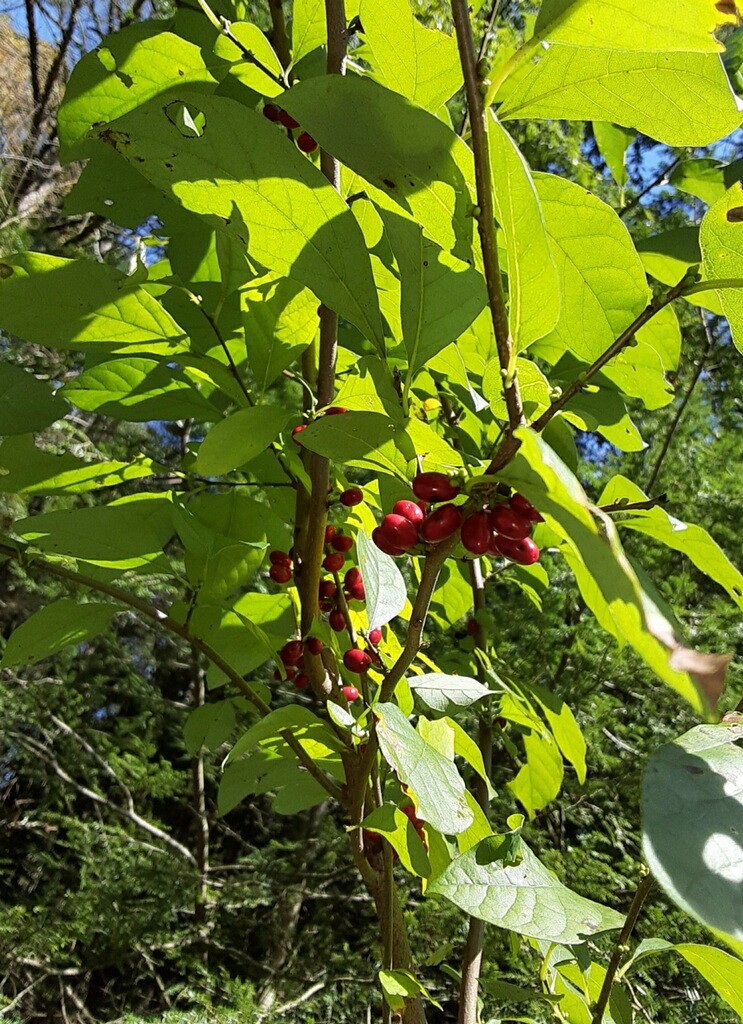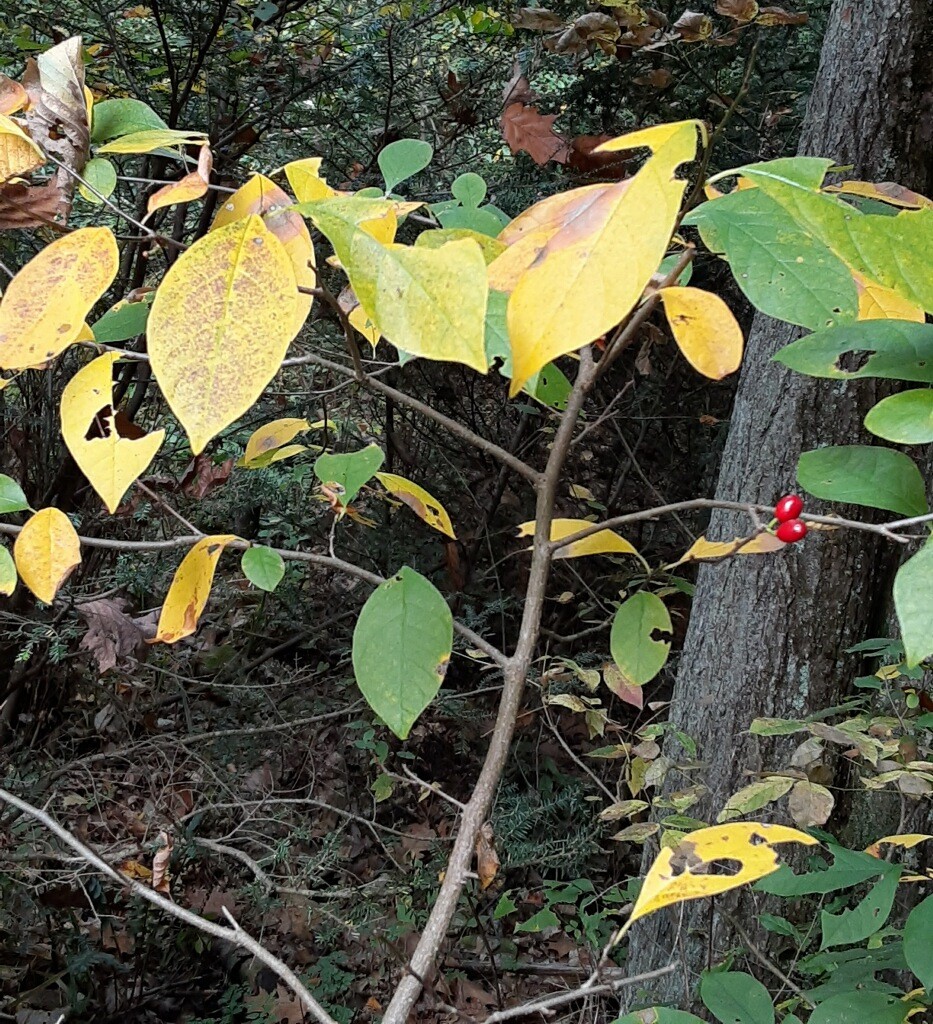By: Susan Sprout
Spicebush (Lindera benzoin) is THE native shrub I love to find while taking nature walks with kids, especially in the fall when its leaves are starting to turn yellow and its spicy berries (drupes) have ripened to a bright red. The squeezing and the sniffing of berries, leaves, and twigs make for a great multi-sensory experience.

The Laurel Family, of which Spicebush is a member, also gives us Sassafras, locally, as well as tropicals like Cinnamon and Sweet Bay. Hooray for this fragrant family! There is also a similar species of Spicebush (with finely hairy twigs) growing in the southeastern U.S., where it is endangered from habitat loss.

Our Spicebush is three to seven feet tall and commonly found in moist woods or in the understory along stream banks. To identify it in the spring, look for clusters of tiny, one-eighth inch yellowish flowers, attached directly on the twigs, usually during March and April. They begin blooming before the two to five inch, egg-shaped leaves appear. In the autumn, look for peeks of red shining through the leaves to find the berries. Sometimes this can be a difficult task because Spicebush is dioecious with male and female flowers on separate plants, requiring the pollen to move quite a distance to pollinate the female flowers. If it doesn’t get there, no berries. You may have to identify it by the lemony fragrance of a crushed leaf…not an unpleasant task!
Spicebush has many culinary and medicinal uses, like the rest of its family – tea from leaves and twigs, spice from dried and ground berries, extract from leaves and bark for inducing perspiration to break a fever or as liniment for rheumatism and bruises or a tonic for colds.

